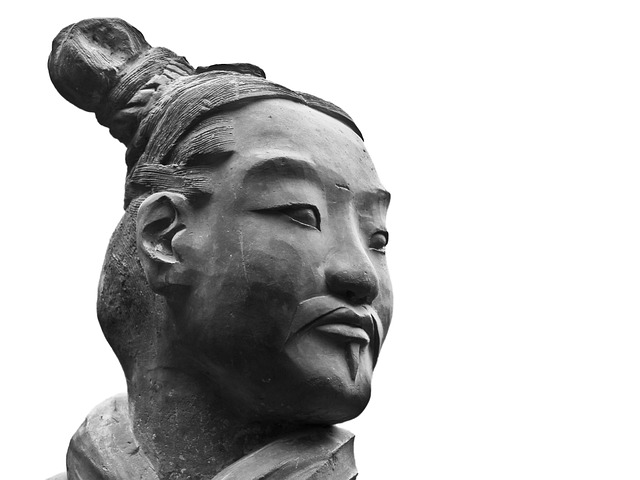The US Army Reserve Flag is a significant symbol representing the dedication of the Army Reserve, combining elements from the Great Seal of the United States with its own color scheme and emblem. The flag features an eagle holding a laurel wreath and three arrows, signifying victory and readiness, over red and white horizontal bands that signify bravery and pure intentions. It also includes a blue field with 50 stars, each star representing a state, symbolizing national unity and the collective strength of the Army Reserve. The flag's design reflects the evolution of military reserve insignia, embodying the commitment and honor of the US Army Reserve, its historical significance, and its role in supporting active-duty forces when needed. It stands as a multifaceted emblem that encapsulates the organization's core values, including unity, preparedness, and excellence, and serves as a living testament to the Army Reserve's heritage and ongoing contributions to national defense. The flag is a crucial element of cultural and historical significance for the Army Reserve, fostering a sense of pride and belonging among its members, and functioning as both a link to history and a motivator for future readiness and effectiveness within the military framework.
The intricate world of military insignia and heraldry stands as a testament to history, tradition, and identity. At the heart of this legacy is the US Army Reserve Flag, a symbol rich with meaning and steeped in American military culture. This article delves into the profound significance encapsulated within its design, tracing the historical evolution of the Army Reserves’ emblematic representations. From the origins of its concept to the current emblem, we explore the layered symbolism that adorns this flag. Each element, when decoded, reveals a narrative of dedication, heritage, and the indomitable spirit of the US Army Reserve. Join us as we unravel the cultural significance embedded in these visual representations and how they shape the modern identity of America’s military reserves.
- Exploring the Symbolism of the US Army Reserve Flag within Illustrated Insignia and Heraldry
- The Historical Evolution of Army Reserves Insignia: From Concept to Emblem
- Decoding the Elements: A Breakdown of the US Army Reserve Flag's Design
- The Cultural Significance of Heraldry in Modern Army Reserve Identity
Exploring the Symbolism of the US Army Reserve Flag within Illustrated Insignia and Heraldry

The US Army Reserve Flag serves as a vivid emblem within the rich tapestry of American military insignia and heraldry, encapsulating the dedication and readiness of the Army Reserve component. This flag is distinguished by its design, which includes the shield from the Great Seal of the United States, encompassed by an eagle’s wings, symbolizing the military’s preparedness to defend the nation’s interests both domestically and abroad. The eagle, a potent national symbol, clutches a laurel wreath in one talon and three arrows in the other, representing victory and readiness for action, respectively. The flag’s field is divided horizontally with red above and white below, reflecting the colors of the Army Reserve itself and signifying valor and purity in intention. The blue field at the hoist bears 50 stars, each star a testament to a state within the Union, reinforcing the idea of national unity and the collective strength of the Reserve component. This flag, when displayed on military vehicles or worn as an emblem by personnel, serves as a symbol of the Army Reserve’s commitment to uphold the Constitution and laws of the United States, ready to support active-duty forces in times of need. Its illustrative design is not merely aesthetic but is deeply rooted in the principles and history of the United States military tradition.
The Historical Evolution of Army Reserves Insignia: From Concept to Emblem

The historical evolution of army reserves insignia is a testament to the rich tapestry of military heritage and symbolism. Initially, such emblems served as rudimentary identifiers on battlefields, distinguishing units for logistical purposes. Over time, these marks of identification became more elaborate, reflecting the increasing complexity of unit roles and functions within the broader military framework. The US Army Reserve Flag, in particular, encapsulates this evolution from a mere sign of recognition to an emblem of pride and unity for America’s reserve forces.
The genesis of the US Army Reserve Flag can be traced back to the 19th century when the concept of reservist units was formalized. The flag’s design has undergone several revisions, each reflecting the changing nature of the Army Reserve. The modern iteration of the flag, adopted in 1972, incorporates the national colors and symbolically represents the ready status of the reserves, with its stars signifying the states and territories organized within the reserve component. This emblem stands as a visual summary of the historical commitment, dedication, and honor that the US Army Reserve embodies, serving as both a rallying point for members and a clear indicator of their presence on both national and international terrains.
Decoding the Elements: A Breakdown of the US Army Reserve Flag's Design

The US Army Reserve Flag serves as a visual encyclopedia of the organization’s values and history, each element carefully chosen to represent the commitment and character of its members. At its center, the flag features the emblem of the Army Reserve, an eagle clasping a laurel wreath and a ribbon bearing the inscription “I AM AN R.S. MAN.” This symbolizes excellence, honor, and the individual’s dedication to duty. Flanking this central image are the words “UNITED STATES” on one side and “RESERVE” on the other, emphasizing the nation’s unity and the specific role of the Reserve component. The field of stars above the emblem represents the Army Reserve as part of the greater military family, with each star symbolizing a state in which the Army Reserve has units stationed. The stars also speak to the ideals of the United States and the Army Reserve’s responsibility to defend them. Below the central emblem is a green field with a silver olive branch on each side, signifying peace and the readiness of the Army Reserve to serve in times of need. The flag’s design is a reflection of the organization’s purpose, its connection to the broader military and national identity, and the principles it upholds. It is a concise visual narrative that honors the past, symbolizes the present, and looks toward the future of the Army Reserve.
The Cultural Significance of Heraldry in Modern Army Reserve Identity

The US Army Reserve Flag, a symbol deeply rooted in tradition and history, encapsulates the cultural significance of heraldry within modern military reserve identity. Heraldry has long been a method of visual storytelling, conveying historical events, lineage, and values through emblems and insignia. In the context of the Army Reserve, this timeless art form serves to unite members across diverse backgrounds under a common banner. The intricate designs on the US Army Reserve Flag represent the collective honor, commitment, and valor of the reserve forces, reinforcing their shared heritage and role within the broader military framework. These symbols are not mere decorations but serve as a tangible link to the storied past and a beacon for future endeavors. They instill a sense of pride and belonging among the reservists, fostering esprit de corps essential for operational readiness and cohesion.
Heraldry in modern army reserve identity is not just a nod to tradition but an integral component of contemporary military culture. The US Army Reserve Flag, with its distinct heraldic elements, stands as a testament to the organization’s resilience and adaptability. It reflects the dynamic nature of the reserve forces, which must balance historical continuity with modern demands. The cultural significance of this heraldry is evident in how it inspires unity and motivates reservists to uphold the values and standards set forth by their predecessors. As a symbol of identity and commitment, the heraldic emblems on the flag serve as a daily reminder of the reserve’s integral role in national defense strategies and its contributions to both peacetime operations and combat readiness.
The intricate tapestry of symbols and designs that adorn the US Army Reserve Flag encapsulates a rich historical narrative and a cultural identity deeply rooted in military tradition. From its origins to its current manifestation, the evolution of the Army Reserve’s insignia reflects the adaptability and enduring spirit of service members who have answered the nation’s call for over a century. Each element within the flag’s design carries layers of meaning, symbolizing the reserve component’s commitment, heritage, and readiness to serve alongside active-duty forces. As a cultural artifact, heraldry serves as a potent reminder of the values and history that the US Army Reserve upholds. This exploration into the symbolism and significance of the flag not only honors its legacy but also reinforces the unity and pride within the military community it represents.
